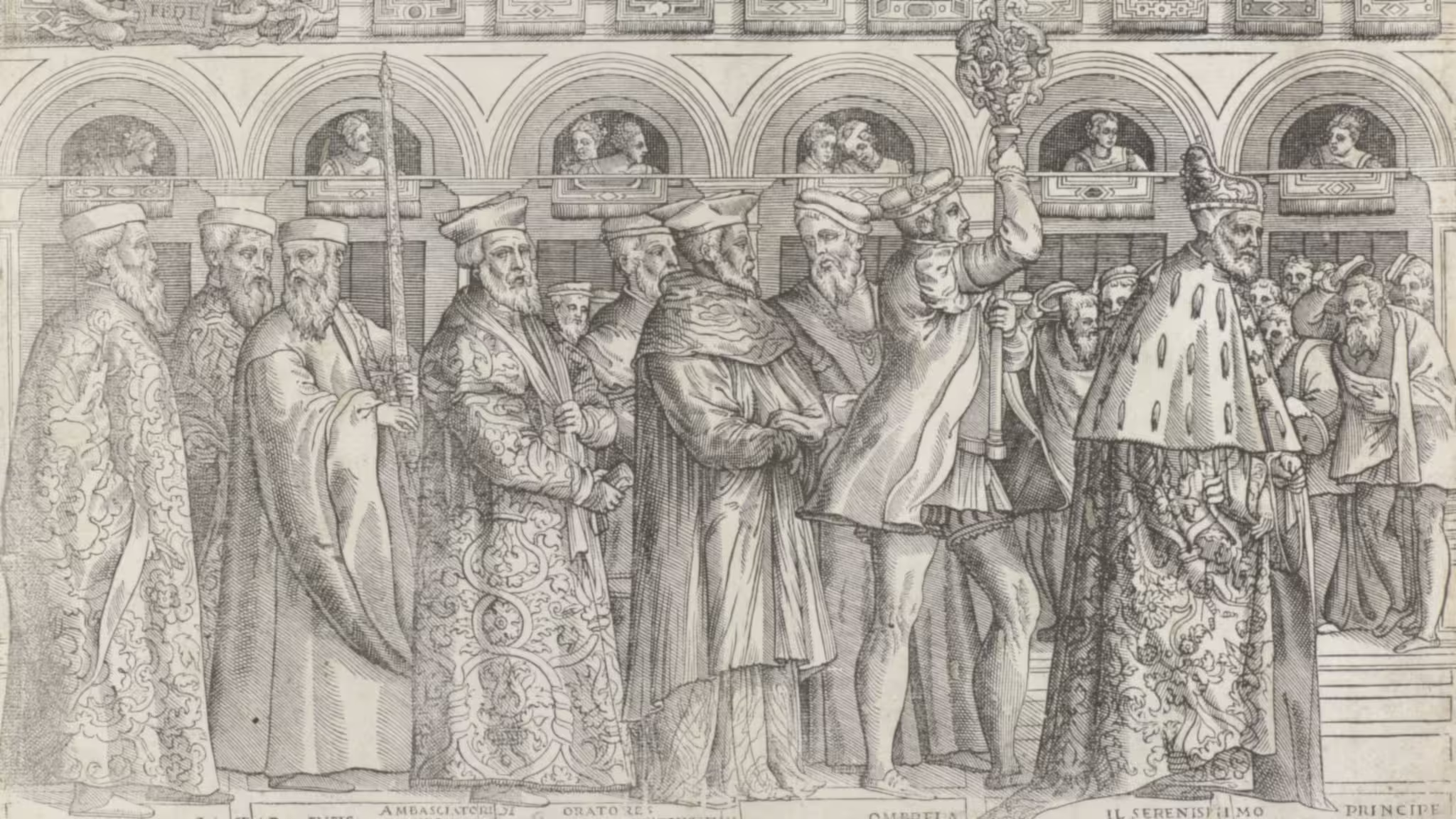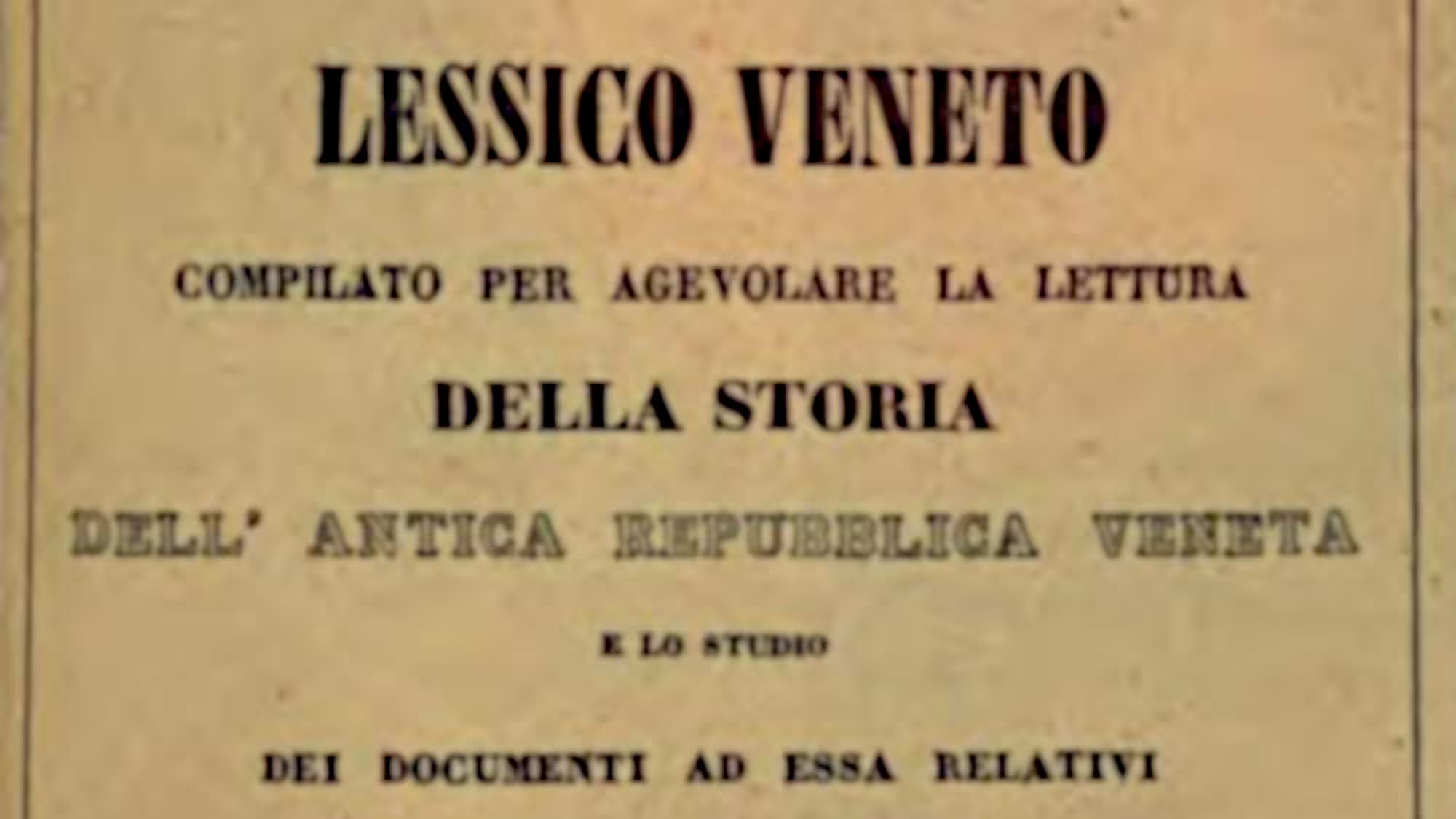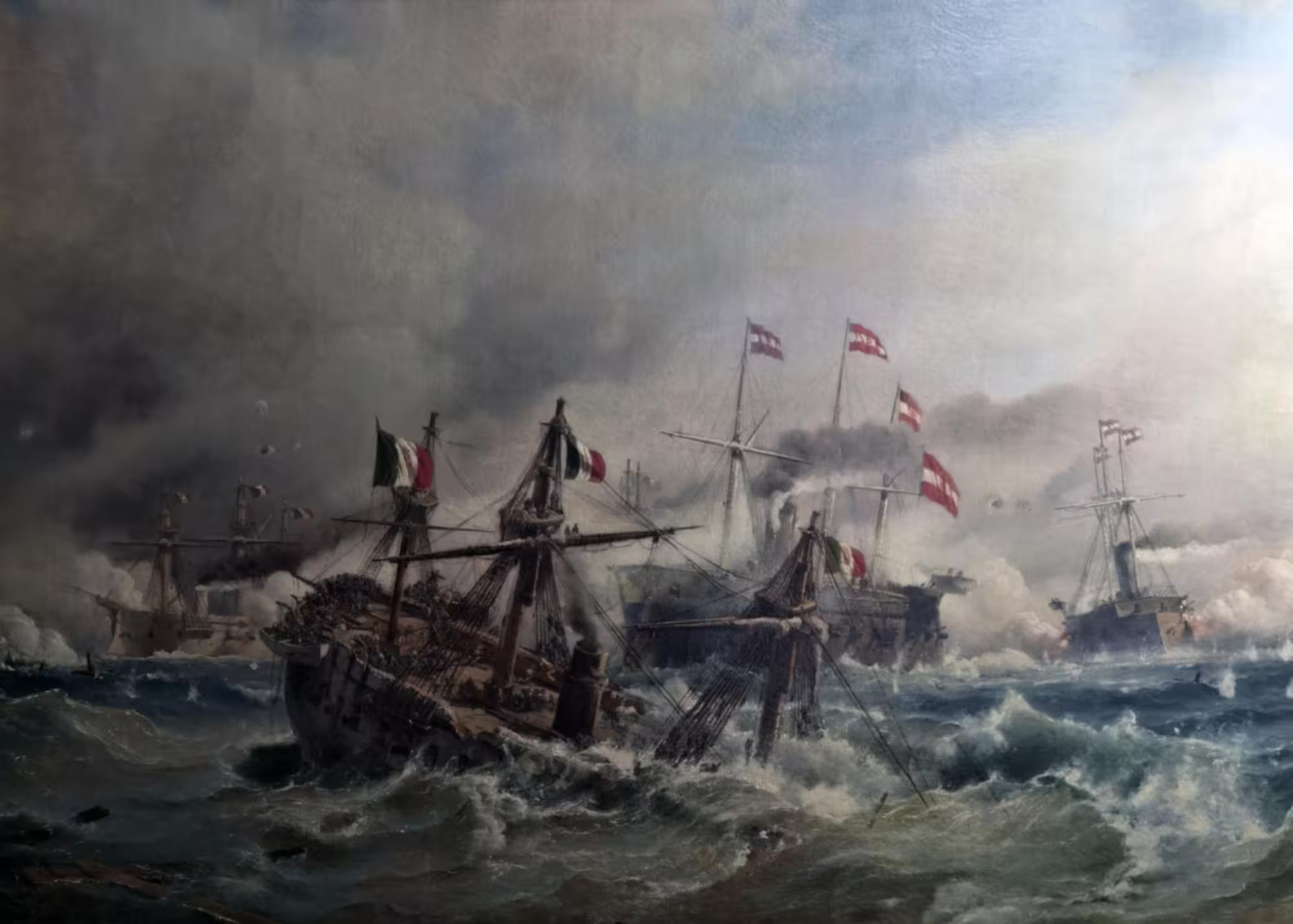The Venetian state was always an ad hoc construct, without any formal constitution. Consequently, the institutions of the Venetian state came and went at the convenience of the ruling elite.
The only institution which existed for the entire duration of the Republic of Venice was the Doge, but even the starting date of that is disputed.
For more information and links to the relevant sources and articles, see State institutions of the Republic of Venice. For the doges mentioned, see the list of all Doges of Venice.
Earliest time
- 697 — First doge Paoluccio Anafesto (697-717), according to tradition. Some scholars believe Paoluccio Anafesto is identical to the contemporary Byzantin Exarch Paulus in Ravenna.
- 726 — Doge Orso Ipato (726-737) elected. He is traditionally considered the third doge, but he was maybe the first doge elected locally, not appointed by Constantinople.
- 830s — The first Procuratore di San Marco was appointed.
- 840 — Doge Pietro Tradonico (836-864) stipulated a treaty with the Holy Roman Emperor. Entering into international treaties is considered one of the signs of sovereignty, and this is therefore seen as an early sign of formal Venetian independence of Byzantium.
- 864 — The Avogadori di Comùn established according to some sources.
1000s
- 1033 — The Consiglio del Doge was established with two members, serving one year at a time, to keep check on the actions of the Doge (some sources place the Consiglio del Doge in 1179).
1100s
- 1141 — The Consilium Sapientum, which developed into the Maggior Consiglio, existed.
- 1172 — The Consiglio Maggiore was established with the power to elect the Doge, depriving the Concio of its primary function.
- 1172-1178 — The Minor Consiglio (or Consiglio del Doge) was established with two members in this period, if not in 1033.
- 1179 — The Consiglio del Doge was extended with four members, serving, as before, one year at a time.
- 1179 — Probable institution of the Quarantia under the Consiglio Maggiore, with a role not unlike that of the Pregadi later, which left the Quarantia exclusively as a criminal and later civil court.
- 1192 — The oldest extant promissione ducale for Enrico Dandolo (1192-1205).
1200s
- 1229 — Consiglio dei Pregadi became a formal institution, with members elected by the Consiglio Maggiore, not appointed by the doge.
- 1229 — The Correttori alle promissione ducale created to revise the promissione ducale.
- 1231 — The Heads of the Quarantia joined the Minor Consiglio.
- 1231 — A second Procuratore di San Marco was added by the Consiglio Maggiore.
- 1259 — A third Procuratore di San Marco added.
- 1261 — A fourth Procuratore di San Marco added.
- 1264 — The Avogaria de Comùn functioned as an appeals court.
- 1266 — The Maggior Consiglio decreed that all deliberations should be written down and kept in the archive of the Quarantia.
- 1269 — The Procuratori di San Marco given charges of the protection of orphans and lunatics, and the execution of wills.
- 1270 — The Cancelliere Grando (cittadino) established.
- c.1282 — The Cancelleria Ducale under the Cancelliere Grando became an early state archive.
- 1284 — The Heads of the Quarantia suggested that membership of the Maggior Consiglio should be hereditary, but the proposal failed.
- 1293 — The Avogaria de Comùn becomes members of the Pregadi.
- 1296 — The proposal of 1284 for making membership of the Maggior Consiglio hereditary was brought up again, but yet again failed to pass.
- 1297 — The Serrata del Consiglio excludes all but the ancient aristocratic families.
1300s
- 1310 — Consiglio dei Dieci — Council of Ten — established as a temporary office after the Bajamonte-Tiepolo conspiracy
- 1315 — A precursor of the Golden Book was created to ensure only men of the right heritage entered the Maggior Consiglio.
- 1319 — The fifth and sixth Procuratori di San Marco added.
- 1319 — The Avogaria de Comùn was charged with controlling who could participate in the Consiglio Maggiore.
- 1321 — The Consiglio dei Dieci become members of the Pregadi.
- 1324 — The entire Quarantia become members of the Pregadi, as “one body and one council.”
- 1350 — The Consiglio dei Dieci got oversight of the Mint.
- 1355 — The Consiglio dei Dieci confronted with the trial of Marin Falier, asked for reinforcement from the Pregadi, and received a Zonta (adjunct) of 20 senators, which then remained.
- 1363 — Additional competences passed to the Consiglio dei Pregadi, and the Zonta of 20 ad-hoc adjunct members added.
1400s
- 1413 — The Zonta of the Consiglio dei Pregadi was extended with 20 more adjunct members, taking the number to forty.
- 1423 — The Concio formally abolished — abandoning last vestiges of the Comune.
- 1437 — Three outgoing Consiglieri del Doge became the Consiglieri inferiori, representing the Signoria within the Quarantia.
- 1442 — The last three Procuratori di San Marco added, bringing the number to nine.
- 1450 — The Zonta of the Consiglio dei Pregadi got 20 more adjunct members, taking the number to sixty.
- 1453 — The Procuratori di San Marco entered the Pregadi.
- 1455 — The Consiglio dei Dieci became a permanent office, by decree of the Maggior Consiglio (it had been temporary since 1310).
- 1485 — The Magistrato alla Sanità was established by the Pregadi to counter the plague and manage the lazzaretti. There were three Provveditori alla Sanità.
1500s
- 1506 — The Zonta adjunct members of the Consiglio dei Pregadi are made permanent.
- 1506 — The Libro d’Oro registering all births in the Venetian nobility was created by law, kept by the Avogadori de Comùn.
- 1526 — The Libro d’Oro also became a register of marriages with the Venetian nobility.
- 1537 — The Esecutori contro la Bestemmia are established by the Pregadi.
- 1537 — The Magistrato alla Sanità became an elected by the Maggior Consiglio instead of by the Pregadi.
- 1556 — The Magistrato alla Sanità was extended with two Sopraprovveditori from the ranks of the Pregadi, and the magistrate became authorised to use capital punishment.
- 1563 — The Council of X Sages, an ad hoc council elected by the Pregadi, became court of appeal for sentences from the Magistrato alla Sanità.
- 1576 — The Scansadori alle Spese Superflue instituted to inspect the rest of the Venetian state offices to eliminate waste and superfluous expenses.
- 1582 — The Pregadi took oversight of the Mint, hitherto under the Consiglio dei Dieci
- 1583 — The Esecutori contro la Bestemmia extended with a fourth member.
1600s
- 1622 — The Inquisitori sopra le scuole grandi established.
- 1624 — The Consiglio dei Dieci became sole court for trials against noblemen, where less serious cases were previously heard by the Quarantia.
- 1628 — A reform of the competences of the Consiglio dei Dieci.
1700s
- 1797 — The Consiglio Maggiore voted on May 12th to dissolve itself. The last doge Ludovico Manin (1789-1797) abdicated on the same day.
Related articles
- State institutions of the Republic of Venice
- The Venetian constitution
- The Doge
- The Consiglio Maggiore
- The ASV Indice by Andrea da Mosto
- The Lessico Veneto by Fabio Mutinelli
- Doges of Venice
- John Adams on the Venetian constitution
Bibliography
- Boerio, Giuseppe. Dizionario del dialetto veneziano. Venezia : coi tipi di Andrea Santini e figlio, 1829. [more] 🔗
- Da Mosto, Andrea. L'Archivio di Stato di Venezia : indice generale, storico, descrittivo ed analitico in Bibliothèque des Annales Institutorum, 5. Roma : Biblioteca d'arte, 1937. [more]
- Mutinelli, Fabio. Lessico veneto che contiene l'antica fraseologia volgare e forense … / compilato per agevolare la lettura della storia dell'antica Repubblica veneta e lo studio de'documenti a lei relativi. Venezia : co' tipi di Giambatista Andreola, 1851. [more] 🔗





Leave a Reply